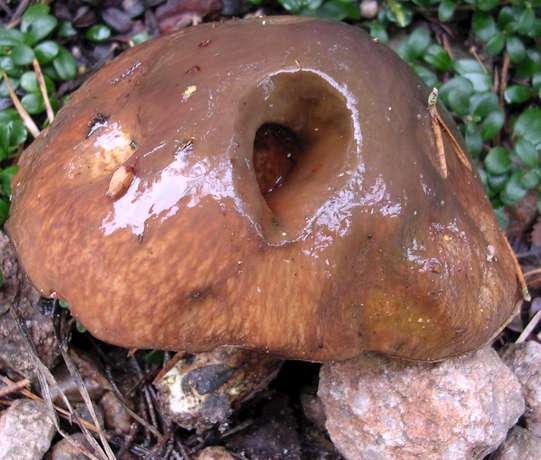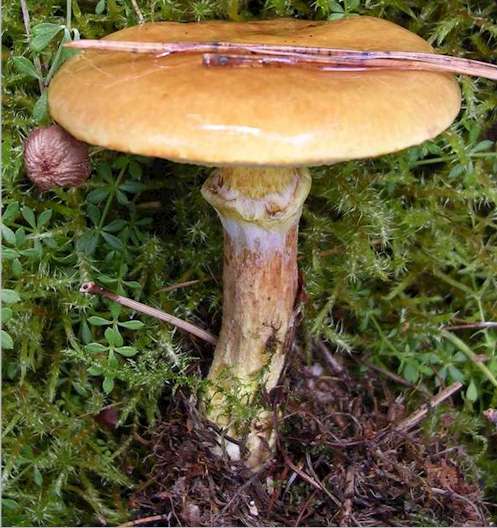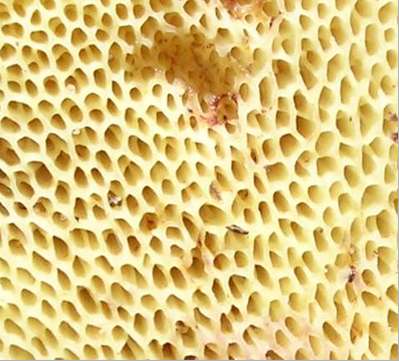..
MORE BOLETES
In contrast
to the species classified as Boletus and Leccinum,
several boletes have been assigned to a third genus, Suillus.
All the species of this genus are found as mycorrhizal
associates of coniferous trees. Many also have a ring on
the stipe, whereas rings are absent from Boletus
and Leccinum spp. The images below show two
mycorrhizal species that are highly specific in their
association with trees - Suillus luteus
(commonly known as "Slippery Jack") which is a
very common mycorrhizal associate of pine trees (Pinus
spp.) and Suillus grevillei
(the "Larch bolete") which is always associated
with larches (Larix spp.). Both of these fungi
are edible.

Suillus luteus,
commonly found as a mycorrhizal associate of conifers,
especially Scots pine. The cap of this fruitbody ranges
from 5 to 10 cm diameter, and is initially covered with a
brown, glutenous slime. The cap dries to a rusty brown
colour; the underside is yellow. [©
Jim Deacon]

Suillus luteus,
seen from the underside, showing the conspicuous ring on
the stipe. [© Jim Deacon]

Suillus grevillei,
the larch bolete, has a yellow-brown cap up to 10 cm
diameter and a conspicuous ring on the stipe. The cap is
covered with a viscous gluten. [©
Jim Deacon]

A highly magnified part of
the underside of the cap of Suillus grevillei,
showing the angular shape of the pores. [©
Jim Deacon]
GO TO PROFILES OF FUNGI ?
GO TO SPECIAL FOCUS TOPICS ?
GO TO HOME PAGE ?
|



